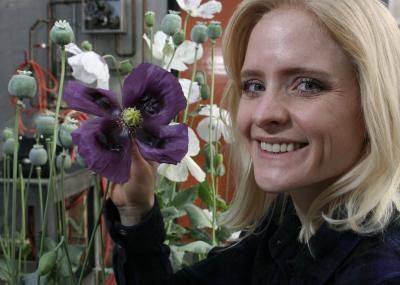Cell movements totally modular, Stanford study shows
Advertisement
A study describing how cells within blood vessel walls move en masse overturns an assumption common in the age of genomics — that the proteins driving cell behavior are doing so much multitasking that it would be near impossible to group them according to a few discrete functions. But now researchers at the Stanford University School of medicine have shown that distinct groups of proteins each control one of four simple activities involved in the cells' collective migration. The findings will be published in genes and Development.
Graduate student Philip Vitorino, the study's first author, began the project in 2004 in the laboratory of senior author Tobias Meyer, PhD, professor of chemical and systems biology. The work is part of the Meyer lab's larger effort to find order in the overwhelming complexity of the inner workings of cells. First they grew the cells (originally from umbilical cord tissue) into sheets and watched what happened when they scratched some of the cells away: They were looking to see the movements of individual cells and overall sheet movements as cells filled the open space.
"We stained the nuclei and took a movie under a microscope and watched what they did over a 15- to 20-hour period," said Vitorino. "That's when we noticed the cells moving inside the sheet, even in the absence of an open space. Not only were they moving, but they were moving in a flow-like pattern with neighboring cells moving as small collective groups. It looked like these groups were moving on invisible paths."
The cells moved at a rate of 10 microns an hour, pretty sprightly for a cell, Vitorino said. The researchers found they could break down movement into four processes: single cell movements, coordination of neighboring cells, directional sensing and cell division.
Vitorino went on to inactivate the more than 100 genes suspected of playing a role in controlling movement and watched how each change affected the cells' group behavior. That's when he was able to show that the genes were acting in concert as distinct modules. "One hypothesis was, if you mess up one gene, everything gets messed up. That was a real possibility," said Vitorino. But he found that blocking a gene tended to disturb only one of the four processes — indicating a modular system at work.
"The cells don't need to activate and inactivate thousands of proteins to control sheet movements," Vitorino said. "Instead they simply coordinate the activity of four simple modules to generate efficient movements."
Vitorino also made some curious, though not immediately useful, observations about the impact of silencing genes for individual cells: "Some inactivations made them spiky, some made them long, some made them so they wouldn't stick together, some made them divide really fast, some, really slow," Vitorino said.
"The hardest part was organizing all of the data and making sense out of it," he added. Generating the data took only a year. Analyzing, retesting and making sense of these data took close to two more.
This discovery, at least in the case of blood vessel cell movement, marks a return to an earlier notion of modules in cell biology, prevalent before the 1990s and the advent of genomics, which led scientists to try to chart the individual actions of millions of genes.
Cell biologists have a penchant for comparing the cell's workings to auto mechanics and Vitorino is no exception. "Using the human genome, biochemical studies and proteomic approaches, scientists have generated a comprehensive list of parts and also some information about where the parts sit under the hood," he said.
"What we have done is organized these parts into those that are involved in generating forward movement, those that are important for steering, those that signal to other cars or those that are important for braking.
"Ultimately, this allows us to simplify very complex behaviors and provides a powerful tool for developing new therapeutics," said Vitorino. "With an understanding of the individual parts of the machine, it will be easier to effectively modify the system to change cell behaviors and ultimately treat human disease."



















































